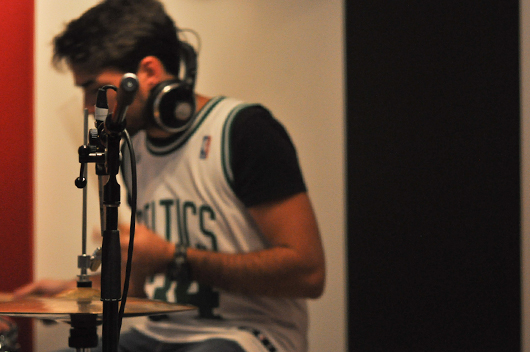Young People and the Creative and Cultural Industries
By Sherene Idriss
17 April 2015
The creative and cultural industries which include fields such as media, music, and design, are key growth sectors in Australia. Young people today are undoubtedly enticed by the prospect of being a creative worker, driven by the intrinsic benefits and personal satisfaction of work, as well as monetary incentives. Young people from various social, cultural and economic backgrounds articulate vocational aspirations in affective terms rather than solely on financial gain. Creative work in particular is presented to young people as exciting, sexy and fun, but the harsh realities of competition, widespread exploitation and underemployment mean that only a small number of youth will persevere with their youthful creative aspirations, often with the financial help of their families.

Photo: 100 Songs Project by Independent Music Project (opens in a new window), Flickr Creative Commons License 2.0 (opens in a new window).
In today's 'post-traditional' world there is no 'job for life'. Rather, young people are particularly vulnerable to the rapid fluctuations of a deregulated market to which the creative industries are not immune.
In spite of the structural conditions working against young people, popular wisdom suggests that if young people are passionate, ambitious, tenacious and individualistic, 'anything is possible'. There are concerns for current generations of youth in this globalised, technologically advanced society, because their expectation for endless possibilities has arguably resulted in what Skeggs (2005) calls an 'agency overloaded' sense of self. As such, they are unlikely to adopt a fatalistic approach to life and career as compared to earlier generations of youth, out of the fear of retrenchment and because they view work as a way to express an authentic identity; working identities thus act as an extension of the self.
My research on the creative vocational aspirations of Arab-Australian young men has revealed that the structural conditions shaping the youth-to-adulthood transition and the neoliberal rhetoric that life is a project to be endlessly worked on is much more intensely experienced by young people of ethnic minority and socio-economically disadvantaged backgrounds. Arab-Australian young men with creative vocational aspirations who come from socio-economic disadvantage, from migrant backgrounds and as 'demonised' young people, do not simply pursue creative aspirations without engaging, to varying degrees, with questions of ethnicity, masculinity and social class.
In my study, I conducted life history interviews with 22 aspiring artists, all of whom spoke of consistent discrimination or prejudice on racial grounds; they were asked to change their names by employers or deny their religious beliefs; they were outcasts in higher education institutions for their inability to cultivate a uniquely 'weird' style required of aspiring creatives; finally, many were called upon to use their artistic skills to feed into multicultural programs rather than being given the chance to create art for arts sake. Not least of all they were unable to participate in the kinds of social networking practices needed to improve their chances of finding employment because 1) they simply did not know where to look and 2) these social practices usually involved drinking or partying which all the young men in my study shied away from out of a fear of disrespecting their families and jeopardising the familial project of social mobility.
One of the main aims that my research achieved was to highlight the pressing need for much more Australian research on how processes of racialisation and the intersections between ethnicity, gender, social class and youth produce particular structural barriers for some groups of young people as they enter the adult world of paid employment.